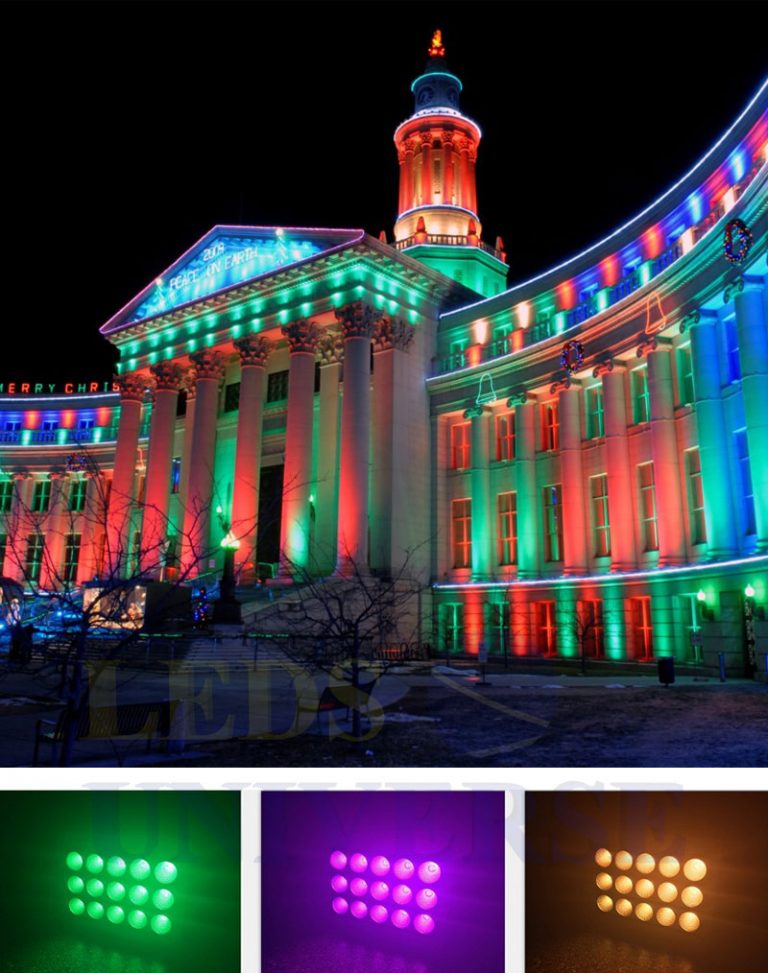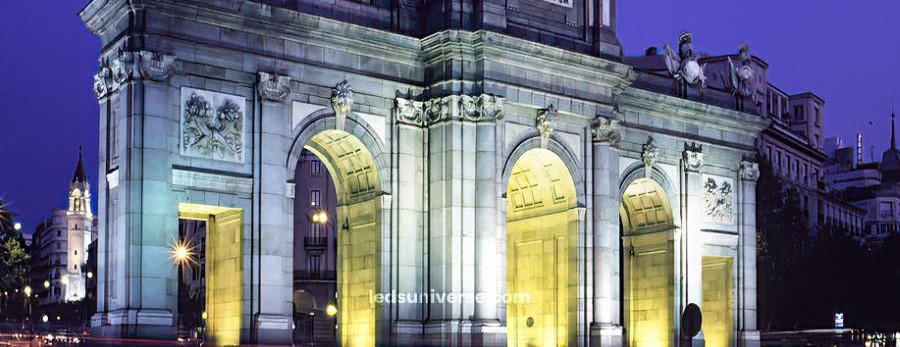Monuments are powerful symbols of history and human achievement. With the right lighting, they transform into stunning night-time displays, amplifying their beauty and significance. Monument lighting ensures these landmarks continue to inspire and captivate, shining brightly for generations to come.
Monuments, from historical landmarks to modern architectural marvels, stand as symbols of cultural heritage and achievement. Proper lighting enhances the monument’s aesthetic, ensuring it remains visible and captivating after dark. The right lighting not only highlights its structure but also preserves its symbolic value, ensuring that the monument continues to inspire onlookers. Monument lighting has evolved to embrace modern technologies like color-changing LEDs, providing a blend of artistic expression, technical precision, and sustainability.
We’ll explore various types of monument lighting, the impact of color-changing lighting, design considerations, and advanced lighting options for monuments and statues.
Reach out for free lighting consultation
Table of Contents
Toggle
Each monument has its own story to tell, and lighting plays a key role in how that story is revealed. Different lighting techniques serve different purposes, from emphasizing specific features to creating visual drama or simply ensuring that the monument is seen from a distance.
Uplighting involves placing light fixtures at the base of the monument and directing the light upward. This technique is ideal for tall structures such as statues, columns, and obelisks, as it accentuates their height and grandeur. The resulting shadows add depth and texture, enhancing the monument’s three-dimensional appearance.
For a softer and more uniform illumination, downlighting is often employed. In this method, lights are positioned above the monument and cast downward, which helps reduce harsh shadows. This is particularly useful for monuments with intricate details, as the even lighting makes carvings and inscriptions more visible and legible.
Accent lighting is designed to highlight specific features of a monument, such as plaques, engravings, or statues. This technique uses focused beams to draw attention to these focal points, making them stand out from the rest of the structure. Accent lighting adds a layer of sophistication and helps tell the monument’s story by focusing on important details.
Floodlighting offers broad illumination and is particularly effective for large monuments. This method ensures that the entire structure is evenly lit, making it visible from afar. Floodlighting is commonly used for significant landmarks, such as national memorials, where visibility and uniformity are key.
Selecting the right colors for monument lighting can have a dramatic impact on how the monument is perceived. LED lights, with their ability to emit nearly every visible color in the spectrum, allow for creative lighting schemes tailored to specific occasions or moods.
For monuments that require a more traditional aesthetic, soft white and orange LED lights are excellent choices. These colors provide a warm, respectful glow that enhances the monument’s architectural beauty without overpowering it. Soft white is ideal for highlighting fine details, while orange adds a subtle vibrancy that draws attention without clashing with the monument’s design.
When commemorating athletic achievements, orange and blue LED lights can be used to evoke feelings of energy and vigor. The contrasting colors create a sense of excitement and movement, making them suitable for monuments that celebrate physical prowess or national victories in sports.
RGB (Red, Green, Blue) lighting allows for a wide range of color combinations, providing a versatile solution for monuments that require dynamic lighting effects. RGB lights can be programmed to shift colors based on events, holidays, or personal preferences. For instance, red, white, and blue lights can be used for patriotic displays, while color-changing wall washers can create dramatic effects on the monument’s surface. RGB lighting is often controlled via DMX or DALI systems, allowing for precise control over color patterns and sequences.

Monument lighting, especially for outdoor installations, must withstand a variety of weather conditions. Waterproof lighting solutions are essential for ensuring longevity and reliability, as monuments are exposed to wind, rain, snow, and other environmental factors.
LED lighting fixtures used for outdoor monuments should have high Ingress Protection (IP) ratings, ensuring they are resistant to both water and dust. Our LED fixtures are designed to operate efficiently in extreme weather, providing reliable illumination even during storms. Additionally, the lights support voltage ranges from 12V to 48V, though most standard installations typically fall within a 95-290V AC range. This ensures that the lighting system remains functional regardless of power fluctuations.
Statue lighting presents a unique challenge due to the varying sizes and shapes of statues. The goal is to highlight the statue’s contours and make it stand out, while ensuring the lighting is elegant and visually appealing.
For statues that require specific areas to be highlighted, narrow beam lights are ideal. These lights create a focused, spotlight effect that draws attention to certain features, such as a face or an inscription. Narrow beam lights are perfect for creating dramatic focal points on statues.
For broader illumination, wider beam lights are more effective. They cast a larger spread of light, which is ideal for statues that need to be seen from multiple angles or distances. This type of lighting ensures that the statue is uniformly illuminated, making it visible from all directions.
Lighting can bring out the three-dimensional qualities of a monument or statue by emphasizing its contours. Using different beam angles and color gradients, it’s possible to create a visually stunning effect that makes the statue appear more lifelike.
By combining large-angle beams for the base and narrower beams for the higher regions of the statue, you can achieve a gradient effect that highlights the statue’s form. Additionally, connecting wall washer lights to DMX or DALI systems allows for color transitions that bring out the monument’s three-dimensional qualities. These lighting sequences can add depth and dynamic movement to otherwise static structures.
Light pollution has become a significant concern for outdoor monument lighting. Excessive lighting can disrupt both the environment and human health, leading to visual discomfort and ecological imbalances. Fortunately, modern lighting technologies offer solutions to minimize light pollution.
Our LED lighting fixtures are designed to reduce glare, ensuring that light is directed only where it’s needed. This not only enhances the monument’s appearance but also reduces unnecessary light spill into the surrounding environment. By minimizing direct light pollution, we can protect the natural surroundings and maintain the monument’s visual integrity.
Designing an effective monument lighting system requires a deep understanding of the monument’s architecture, location, and purpose. The goal is to create a lighting scheme that enhances the monument’s beauty without compromising its historical or cultural significance.
Maintaining the architectural integrity of the monument is paramount. The lighting should complement the structure rather than overpower it. Careful attention must be paid to the placement of fixtures, ensuring that they blend seamlessly with the monument’s design. This is particularly important for historical monuments, where preserving authenticity is essential.
Choosing the right lighting angles is critical to achieving the desired effect. Incorrect angles can create harsh shadows or glare, detracting from the monument’s visual appeal. Properly positioned lights can highlight the monument’s features while maintaining a balanced and cohesive appearance.
Monument lighting serves to enhance the visual appeal and significance of structures that represent our cultural heritage and achievements. From traditional uplighting and downlighting to dynamic color-changing displays, the right lighting can transform a monument into a powerful beacon of history and artistry. By embracing modern technologies like waterproof LEDs, RGB systems, and sustainable lighting designs, we can ensure that monuments continue to captivate and inspire for generations to come.